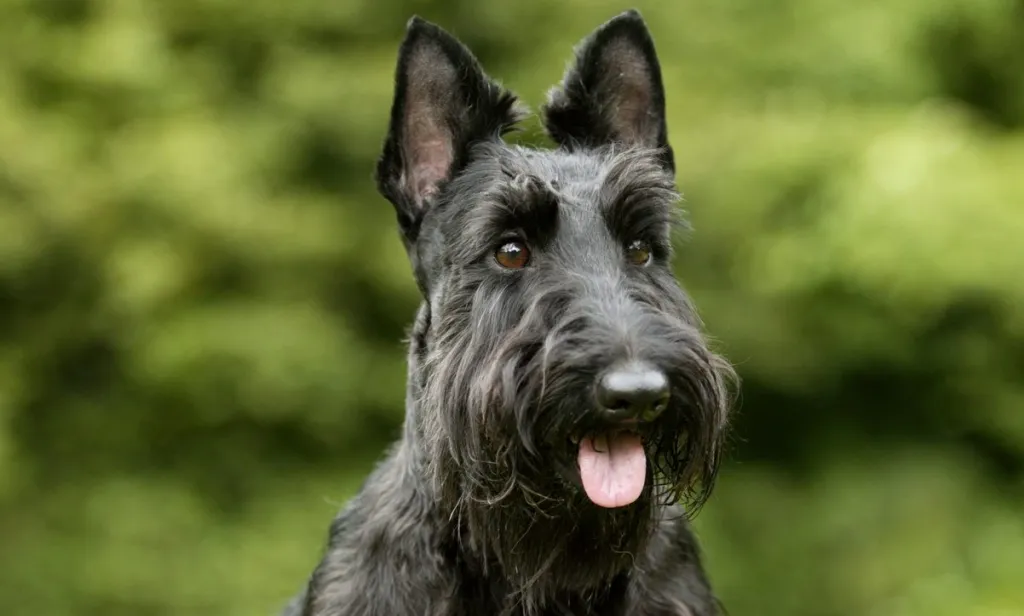Welcome to our in-depth exploration of the Scottish Terrier, affectionately known as the “Scottie”. Join us as we delve into the origins, unique characteristics, care essentials, training tips, and health considerations of this spirited and iconic breed. Whether you’re a longtime fan or considering adding a Scottie to your family, get ready to uncover everything you need to know about these feisty yet lovable companions!
Origins and History
Ancient Roots of the Scottie
The Scottish Terrier has a rich history that dates back centuries in Scotland, where it was originally bred for hunting vermin, particularly foxes and badgers. Their tenacity, agility, and distinctive appearance made them popular working dogs and beloved companions among Scottish nobility and commoners alike.
Breed Recognition
Formally recognized by kennel clubs in the late 19th century, the Scottish Terrier quickly gained popularity beyond Scotland’s borders. Their compact size, robust build, and courageous spirit endeared them to dog enthusiasts worldwide, leading to their enduring status as a cherished breed.
Physical Characteristics
Sturdy and Compact Build
Scottish Terriers are small to medium-sized dogs, typically standing 10 to 11 inches tall at the shoulder and weighing between 18 to 22 pounds. They are known for their strong, muscular build and distinctive outline, characterized by a deep chest, short legs, and a powerful jaw.
Double Coat and Colors
Scotties sport a double coat consisting of a dense undercoat and a wiry outer coat that provides protection from harsh weather conditions. Their coat comes in various colors, including black, brindle, wheaten, and sometimes gray. Regular grooming, including brushing and occasional stripping, helps maintain their coat’s texture and health.
Temperament and Behavior
Feisty and Independent
Scottish Terriers are renowned for their spirited and independent nature. They possess a strong-willed temperament with a hint of stubbornness, which adds to their charm and character. While loyal and affectionate towards their family, they also exhibit a bold and confident demeanor, making them excellent watchdogs.
Training Insights
Due to their independent streak, Scotties benefit from early socialization and consistent, positive reinforcement training. They respond well to firm yet gentle guidance and thrive on mental stimulation. Training sessions should be engaging and varied to keep them interested and focused.
Health and Wellness
Common Health Issues
While generally healthy, Scottish Terriers may be predisposed to certain health conditions, including:
- Scottie Cramp: A hereditary condition affecting muscle coordination, particularly during moments of excitement or stress.
- Von Willebrand’s Disease: A blood clotting disorder that can cause excessive bleeding from minor injuries.
- Patellar Luxation: A condition where the kneecap temporarily moves out of place, leading to lameness.
Veterinary Care
Regular veterinary check-ups, vaccinations, and preventive care are essential to ensure the Scottie’s overall health and well-being. A balanced diet suitable for their size and activity level, along with maintaining a healthy weight, supports their longevity and vitality.
Care and Grooming
Grooming Requirements
Scottish Terriers have moderate grooming needs due to their wiry coat. Regular brushing helps prevent matting and remove loose hair. Occasional stripping of the coat maintains its texture and promotes healthy growth. Routine grooming also includes nail trimming, dental care, and ear cleaning to prevent infections.
Exercise and Living Environment
Despite their small size, Scottish Terriers have moderate exercise requirements and enjoy daily walks, playtime, and interactive activities. They thrive in homes with a secure yard where they can explore safely. Due to their hunting instincts, they may chase small animals, so supervision is recommended in open spaces.
Living with a Scottish Terrier
Family Compatibility
Scottish Terriers are devoted and affectionate towards their family members, forming strong bonds that endure over time. They are generally good with children and other pets when introduced and socialized properly from a young age. Their playful nature and love of companionship make them ideal for active households.
Behavioral Considerations
Understanding the Scottie’s temperament and traits, such as their independence and protective instincts, helps create a harmonious living environment. Providing mental stimulation, structured training, and consistent routines contribute to their overall happiness and well-being.
Conclusion
The Scottish Terrier is a spirited and iconic breed with a rich history and distinctive personality. Whether you’re captivated by their courageous spirit, elegant appearance, or loyal companionship, owning a Scottie promises a rewarding experience. Remember, responsible ownership includes providing proper care, training, and affection to ensure a happy and healthy life for your Scottish Terrier companion.
- Best Dun & Bradstreet (DNB) Alternatives for 2025 - April 19, 2025
- Best 6sense Alternatives for 2025 - April 18, 2025
- Best Instantly.ai Alternatives for 2025 - April 18, 2025



